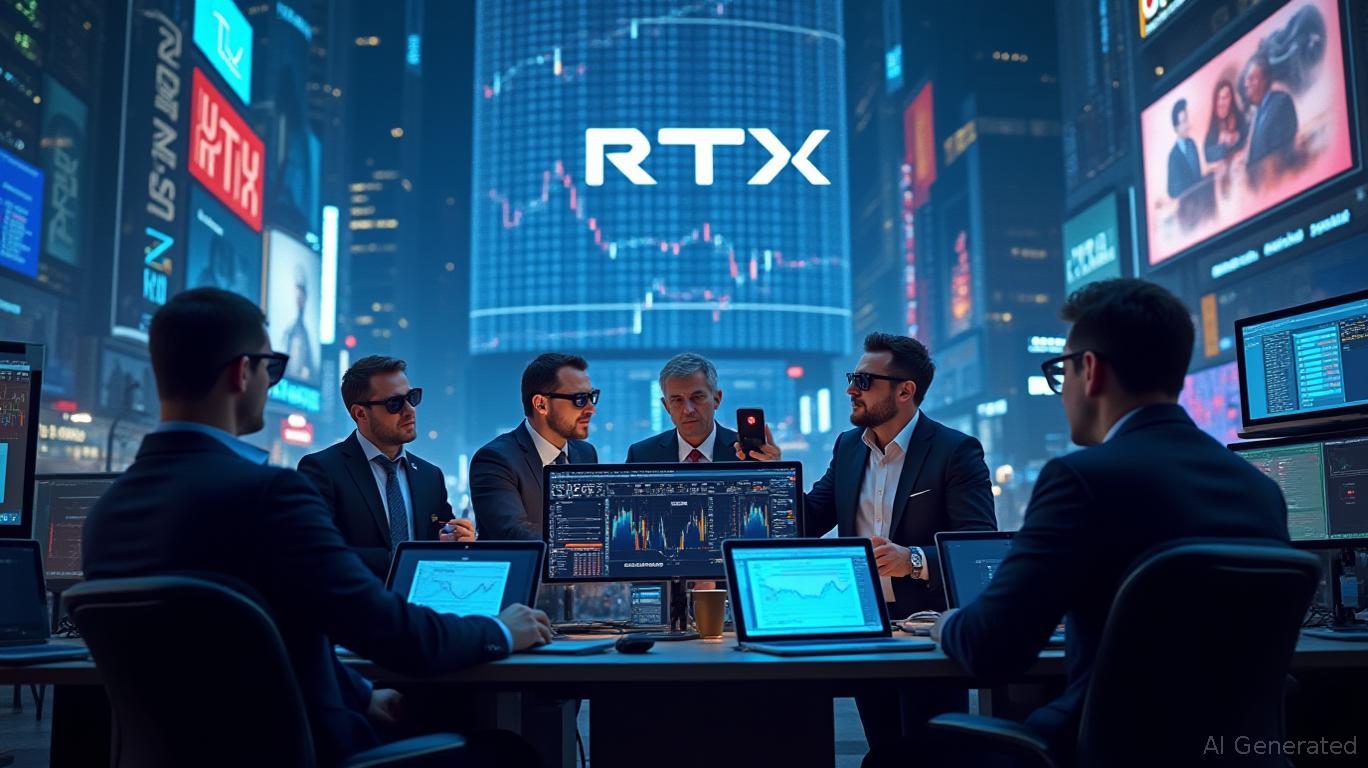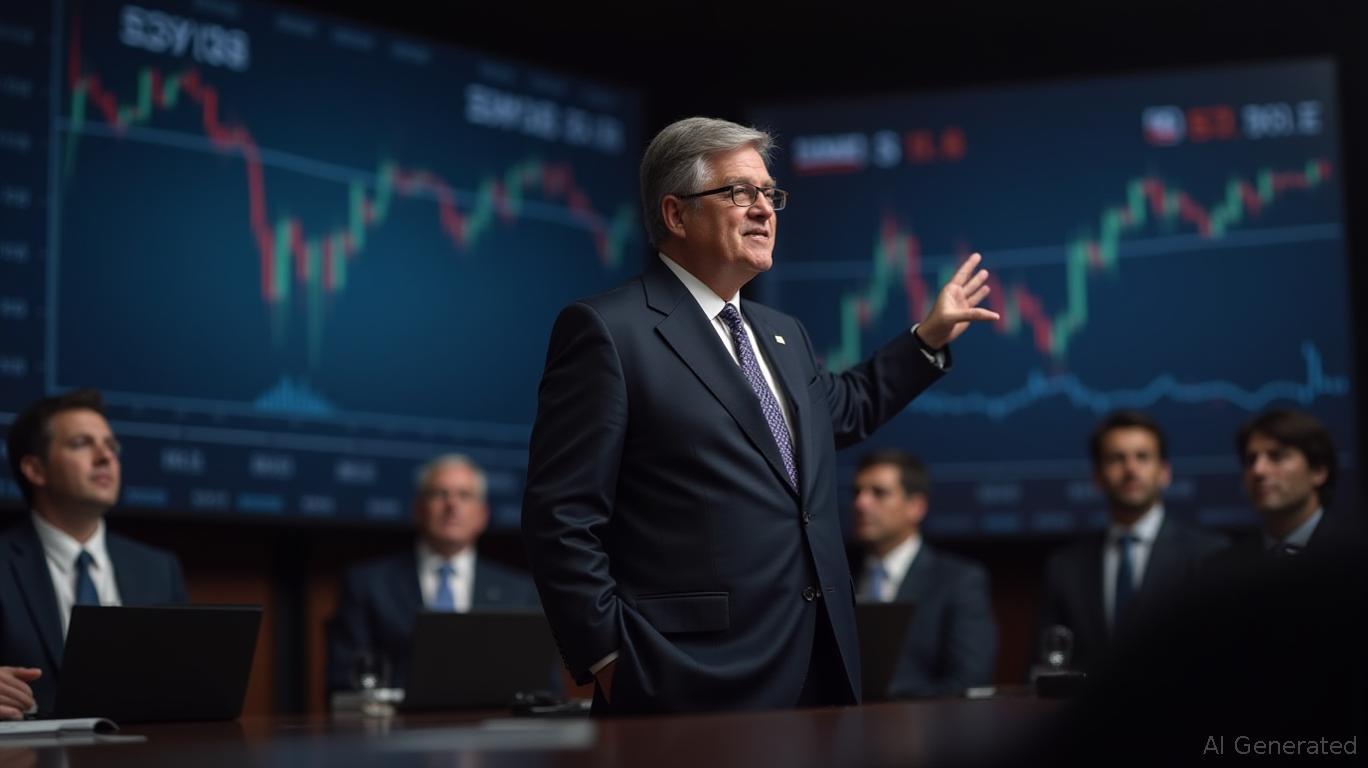Solana News Today: Market Focus on Practical Applications Drives Major Investors to Redirect Funds Toward RTX
- Solana (SOL) price reanchors above $200, driven by institutional ETF launches and Western Union's USDPT integration on its network. - Technical analysis targets $230–$250 if support holds, while 2025 forecasts reach $390, citing 2021 accumulation patterns and rising network activity. - Whale capital shifts to Remittix (RTX), a payments-focused blockchain with cross-chain capabilities and $27.7M in funding, signaling market preference for utility-driven projects. - Solana faces inflow declines and Ethereu
Solana has reclaimed the $200 mark, with market watchers anticipating a possible rally toward $250 as short-term resistance levels stabilize. The token’s recent gains have been supported by increased institutional interest, notably the introduction of the Bitwise
Looking further ahead, projections are even more bullish. TraderSZ has set a 2025 target of $390 for Solana, drawing comparisons to the accumulation phase seen in 2021, as noted by FinanceFeeds. This outlook is supported by growing network usage, developer engagement, and Solana’s integration into mainstream financial systems. However, recent data shows a slowdown in institutional inflows and declining exchange reserves, which could pose challenges if trading activity does not recover, according to a

Although Solana continues to capture attention, blockchain data shows that major investors are quietly shifting their focus. Large holders are moving into Remittix (RTX), a blockchain platform centered on payments that aims to connect crypto with traditional currencies, as observed by LiveBitcoinNews. RTX’s practical approach, enabling instant crypto-to-bank transfers in more than 30 countries, has drawn both individual and institutional investors. Experts liken its disruptive potential to Ethereum’s impact on smart contracts, emphasizing RTX’s cross-chain support and minimal transaction fees, according to a
This shift highlights a wider trend in the market: investors are increasingly favoring projects with real-world use cases over purely speculative tokens. Remittix’s beta wallet, confirmed exchange partnerships, and $27.7 million in private investment have positioned it as a strong candidate for the next market uptrend. “RTX combines the functionality of fintech with the growth potential of emerging blockchain technology,” commented an industry insider, reflecting views reported by Tribune India and others.
Meanwhile, Solana’s ecosystem is facing its own hurdles. Despite a 7.5% increase in daily trading volume to $6.85 billion, as reported by FinanceFeeds, inflows into the token have dropped to a six-month low, according to LiveBitcoinNews. This has led to speculation that capital may soon shift to projects like RTX. Noomez’s strategy of burning unsold tokens in each round has drawn parallels to the early days of
The role of institutions remains crucial. The adoption of USDPT by Western Union and the approval of Solana ETFs point to growing mainstream acceptance, but Ethereum’s dominance in DeFi—with $60 billion in total value locked—continues to pose a challenge for Solana, as highlighted in a
At present, Solana’s price direction depends on its ability to stay above $200. A move past $230 could spark renewed momentum, but falling below this threshold may see prices drop back to the $170–$180 range, according to LiveBitcoinNews. In the meantime, RTX’s ascent signals a market shift toward practical utility, with major investors backing infrastructure projects that could transform global payments.
Disclaimer: The content of this article solely reflects the author's opinion and does not represent the platform in any capacity. This article is not intended to serve as a reference for making investment decisions.
You may also like
Bitcoin Updates: Fed’s Softer Stance Supports Both Economic Expansion and Inflation—Positive Momentum for Crypto
- The U.S. Federal Reserve cut rates by 25 bps to 3.75%-4.00% on October 29, 2025, ending quantitative tightening by December 1, easing liquidity constraints. - Crypto markets initially dipped post-announcement but gained analyst support as lower rates and weaker dollar historically boost Bitcoin and Ethereum as hedges. - Institutional crypto demand remained strong with Coinbase reporting 2,772 BTC inflows and Bitcoin ETFs seeing net inflows, while Tether's USDT supply surpassed $183 billion. - The Fed's "

Bitcoin News Update: Bitcoin Rally Drives $2.8B in Gains While Strategy's Shares Drop 15% Year-to-Date
- Strategy Inc. (MSTR) reported $2.8B Q3 2025 net income from Bitcoin's $70.6B portfolio (640,808 BTC) amid $20B unrealized gains. - New fair value accounting rules enabled profit recognition without selling Bitcoin, reversing $340M 2024 losses and boosting operating income to $3.9B. - CEO Phong Le targets $34B operating income if Bitcoin hits $150K, while $20B 2025 capital raises expanded holdings by 40,000 BTC. - Despite 51.74% BTC gains, shares fell 15.15% YTD due to dilution concerns, contrasting with

MEV's Tendency to Centralize Poses a Challenge to the Fundamental Principles of DeFi
- MEV (Maximal Extractable Value) destabilizes DeFi markets by enabling miners/validators to reorder transactions for profit, imposing a "hidden tax" on retail traders through front-running and sandwich attacks. - Aditya Palepu highlights systemic risks: 80% of MEV costs fall on retail users, while institutions avoid DeFi to mitigate front-running risks, undermining market liquidity and stability. - Trusted Execution Environments (TEEs) encrypt transactions pre-execution to block front-running, but vulnera

MEV Takes Advantage of DeFi Transparency, Triggering Concerns Over Fairness
- MEV exploits blockchain transparency to reorder transactions, creating a "hidden tax" that deters institutional DeFi adoption and harms retail users. - Sandwich attacks and front-running cost retail investors up to 80% of MEV-driven losses, with 24% of Ethereum blocks affected annually. - Trusted execution environments (TEEs) emerge as a solution by privatizing transaction data, potentially unlocking $trillions in institutional capital. - Experts warn MEV centralizes power and inflates costs, requiring g
